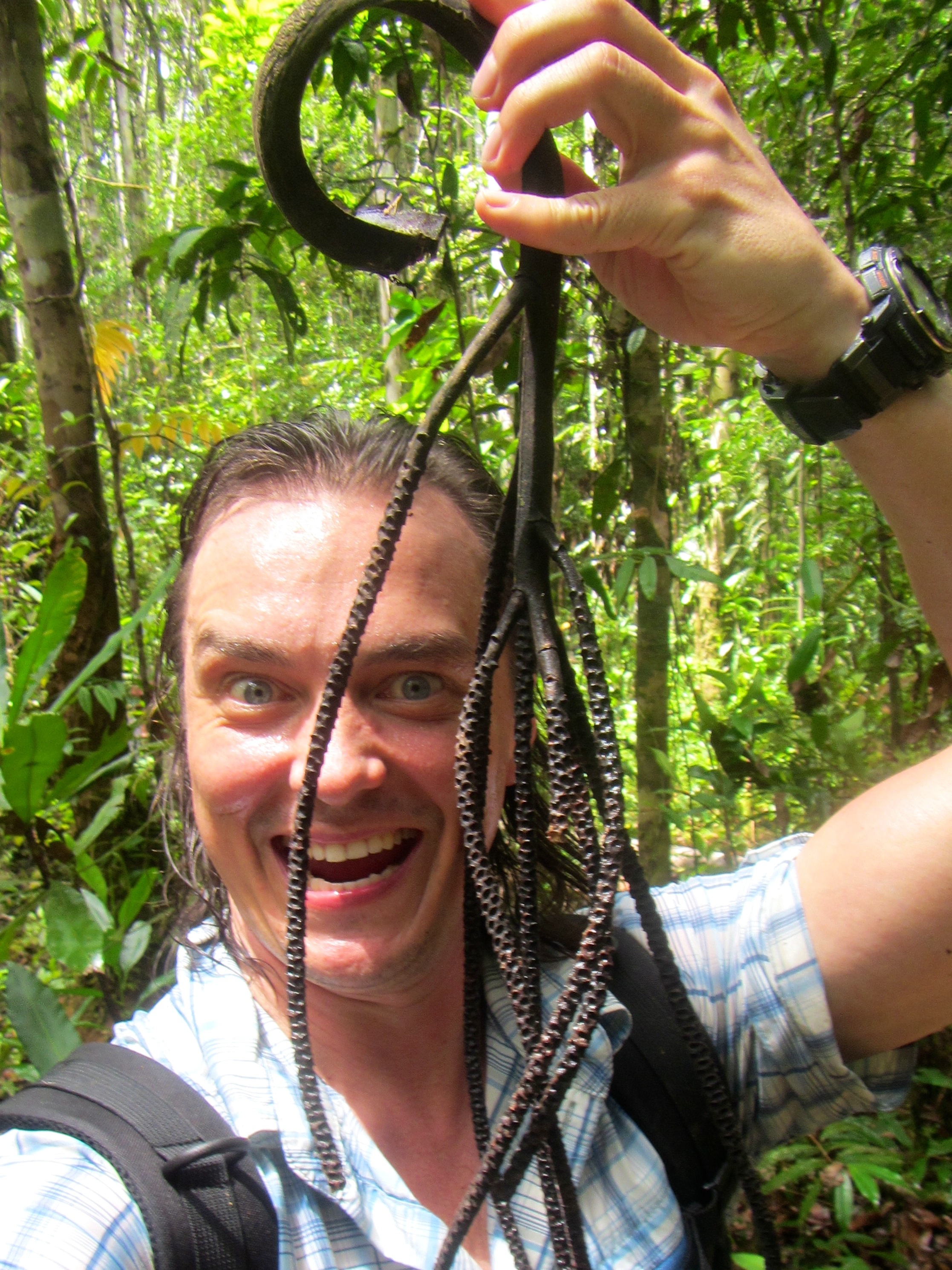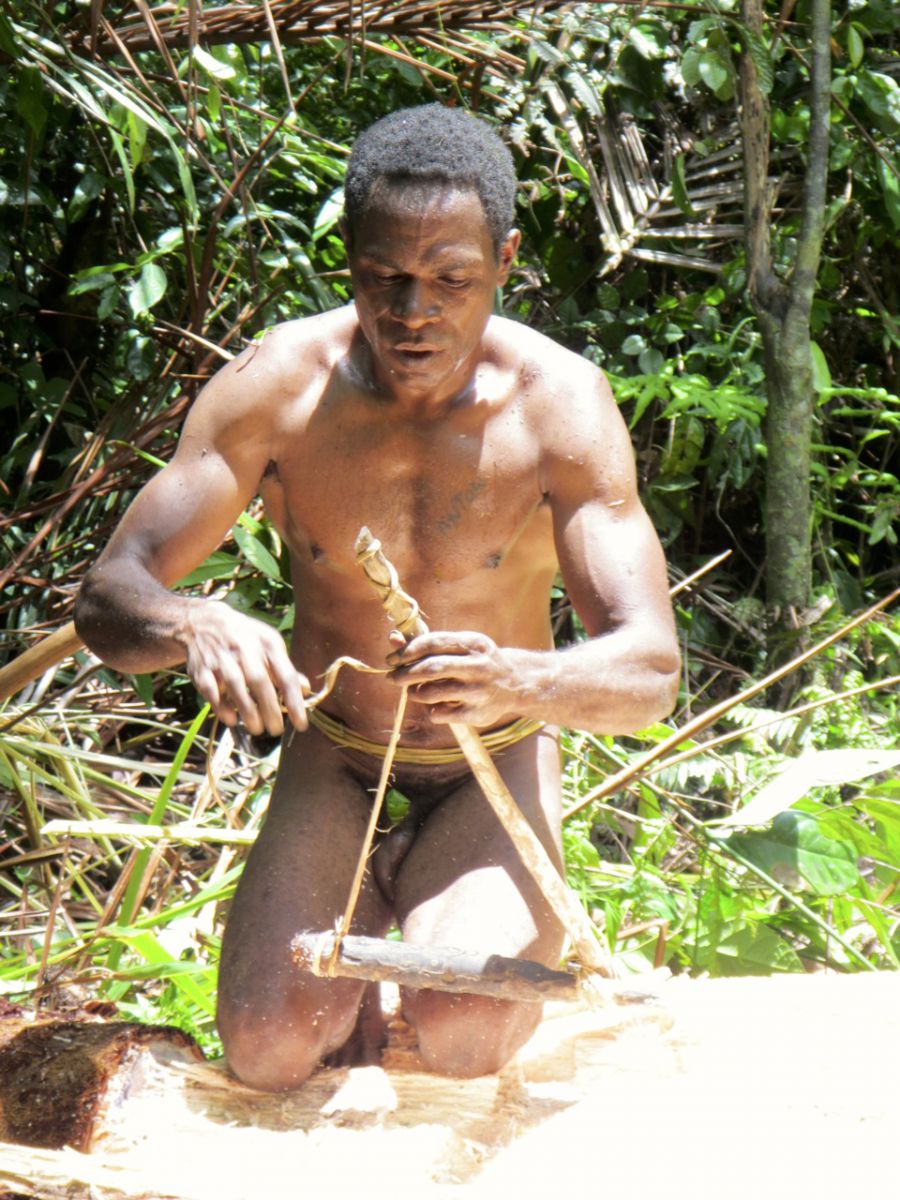FROZEN BIOLOGICAL EVOLUTION
A scientific expedition is the same sacred action, a ritual, during which the scientists obtain some secrets from Nature and make discoveries. The objective of the expedition “Live parallel EXPERIENCE” was to study the culture of the Papuans, their social and biological constituents.
From the scientific point of view Papua New Guinea is of great interest as it is a real isolated reservation area created by Nature. It is impossible to reach this island from the sea: a ship or a boat will just break on sharp reefs. When the ancestors of the present day Papuans came to this land they turned out to be cut off from the Australian continent due to the tectonic fault of plates. And all that time they had lived detached from the world. They had no opportunities to move to the north or south. But at the same time they found themselves under ideal climatic conditions. Life on the island didn’t develop either in cultural and social aspects or in terms of biological evolution and in fact preserved undisturbed. The man didn’t have a need to acquire any new skills: weather changes didn’t threaten him and thus he didn’t feel the need in clothing and permanent houses; flora and fauna didn’t change as well so he didn’t have to explore new sources of food using the technologies of team work. As a thousand years ago they ate the sago palm the same way they do nowadays. They faced the threat of overpopulation but they successfully solved this problem by means of wars and cannibalism.
One of the ruling theories states that life on the Earth originated in this very place - at the equator, unde the perfect conditions when the temperature didn’t change and thus all the other contributing factors remained stable. Some time later when living organisms started moving to the North and South they began to change, to evolve. For example, according to the Darwinian theory evolution came through natural selection, in other words the most adapted human beings who possessed useful ancestorial characters survived. The Lamarck’s theory states the “law of inheritance of acquired characters”. According to Lamarck the giraffe has a long neck as generation after generation it pulled its neck up trying to get leaves from the trees and thus exercised the neck every time making it longer and longer.
Biological evolution is a non-reversible historical development of wildlife which is accompanied by change in the genetic profile of populations, building up of adaptations, formation and extinction of species, transformation of ecosystems and biosphere as a whole. As to the Papuans of New Guinea the biological evolution seems like being frozen as they didn’t have to acquire any new useful characters – nothing changed in the world around them.
There is one funny statement, they say, by labour fire is got out of a stone. Many a true word is spoken in this jest. Modern scientists think that human sociality is of productive but not of biological origin. Every time the humanity gained some new complicated technology it made a big shoot forward. As a rule these technologies were collective, they required formation of a team the boundaries of which were limited not by instincts like in case of other animals but by the degree of complexity of a new technology, and that is not a biological factor by definition. That is why human sociality is noted by special not biological but productive origin. The greater the production technologies are the larger and the more compound the society is.
Why didn’t the the Papuan community manage to step forward out of the Stone Age? They couldn’t acquire themselves the technology of metal processing. And due to their isolation from the outer world they didn’t manage to adopt this technology from the others. We tried to offer the Korowai people a metal machete. Itseemedawkwardtothem. Maybe this was for the better. After all in this case it was not a technology we would bring them but just a tool which would make it faster to cut down the sago palms as well as easier to kill people. Though there is no denying the fact that like any other human beings the Korowai people are extremely curious and they are interested in everything new. If you could only see their interest and joy when they were getting the presents: flashlights, clothing and decorations.
Many people in our expeditions were afraid of catching some deseases from the jungle inhabitants. And as being a doctor I had to explain that it was not them but us who constituted a threat; it was all about us, the people with the immunity trained due to vaccination, fighting with antibiotic drugs, desinfectants and other delights of civilization. We bring here a stable microbiological “bomb” which will be able to destroy the jungle inhabitants as time passes.
Anyway the human expansion into the last virgin places will certainly go on...
Evolutionary transformations will influence them for sure. But this time they played just another trick on us – having turned them into bloodthirsty man eaters in our consciousness. And nobody knows how we would behave if we were under those conditions armed not only with technologies but with various means of eliminating of similar beings.
Maybe this was what Anton was thinking about, a Korowai, our guide, the cannibal who ate many enemies and the man who saved his parents having killed them but not having left them to the enemy, a Papuan who knows the laws of the green as well as of the grey concrete jungle, unlike us and his tribesmen. And it seemed to me this jungle is easier for him to live in, more honest, somehow...
A feeling of sadness seized us and the Korowai for the twentieth time on this island far away from our Motherland. We were taking leave in silence and we knew that we would never see each other any more.
The jungle warriors and lords, the tribes lost in time with static culture and evolution taught to us much during these days. What did we teach you? Nobodyknows... But I hope we didn’t do harm at least...











.jpg)










